 Last additions - IBARAKI 茨城県 Last additions - IBARAKI 茨城県 |
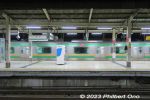
JR Koga Station platform.Mar 11, 2023
|
|
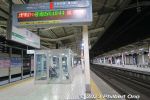
JR Koga Station platform. About 73 min. by train from central Tokyo.Mar 11, 2023
|
|
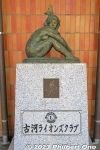
JR Koga Station east entrance sculpture.Mar 11, 2023
|
|

JR Koga Station east entrance.Mar 11, 2023
|
|
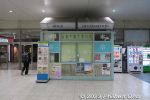
JR Koga Station information center (closed).Mar 11, 2023
|
|

JR Koga Station has a shopping mall named VAL.Mar 11, 2023
|
|
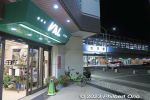
JR Koga Station has a shopping mall named VAL.Mar 11, 2023
|
|
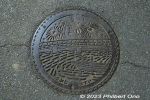
Manhole in Koga, Ibaraki Prefecture showing fireworks and river.Mar 11, 2023
|
|
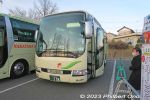
Free shuttle buses from Koga Station going to and from the park. This is the Kubo Park parking lot. The return bus is also here.Mar 11, 2023
|
|
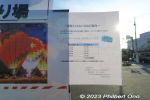
Shuttle bus schedule from JR Koga Station to Kubo Park.Mar 11, 2023
|
|
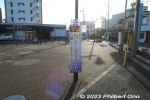
There were free shuttle buses from Koga Station (west exit) going to and from the park.Mar 11, 2023
|
|
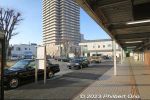
JR Koga Station west exit.Mar 11, 2023
|
|
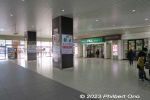
JR Koga StationMar 11, 2023
|
|
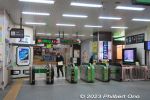
JR Koga Station turnstile.Mar 11, 2023
|
|
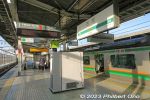
JR Koga Station (Tohoku Main Line or Utsunomiya Line) is the closet train station to Kubo park.Mar 11, 2023
|
|
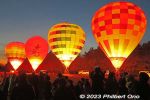
Crowd-pleasing event.Mar 11, 2023
|
|
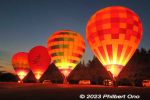
The "Balloon Glow" event at Koga Kubo Park in Jan. 2023 was colorful and impressive even when the balloons did not fly. Free event, mainly local crowds.This was actually a 2022 Christmas Eve event, but it was postponed twice due to bad weather or strong winds. Finally held on Jan. 22, 2023.Mar 11, 2023
|
|
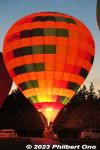
Mar 11, 2023
|
|
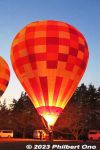
Mar 11, 2023
|
|
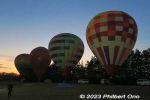
This is how it looks when they are dark.Mar 11, 2023
|
|
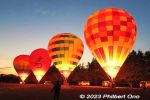
All four balloons lit up at the same time many times during the one-hour balloon glow event. They played J-pop music in the background.Mar 11, 2023
|
|

This photo was taken during the several seconds when the burners of all four balloons were flaming into the balloons at the same time.Mar 11, 2023
|
|
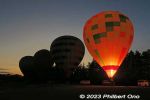
The balloon lights up only when the burner is shooting a flame under it. The flame illuminates the entire balloon. Mar 11, 2023
|
|
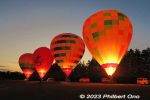
When it got dark enough, all four balloons lit up their balloons simultaneously numerous times during the one-hour event.Mar 11, 2023
|
|
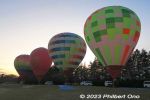
Standing by for sunset.Mar 11, 2023
|
|
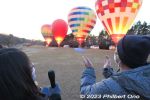
The MC came up to the crowd and asked people to give the word to light up the balloons.Mar 11, 2023
|
|
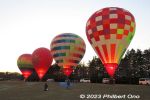
They started blowing flames into the balloon.Mar 11, 2023
|
|
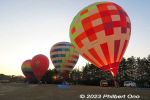
Mar 11, 2023
|
|
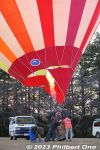
Burner is lit every so often to maintain the hot air.Mar 11, 2023
|
|
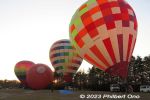
Mar 11, 2023
|
|
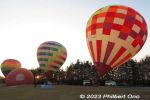
Hot-air balloons are vulnerable to strong winds. See how the balloon can sway in strong winds.Mar 11, 2023
|
|
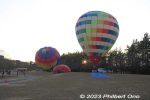
Mar 11, 2023
|
|
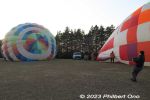
Mar 11, 2023
|
|
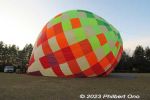
Mar 11, 2023
|
|
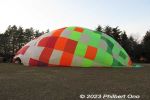
Mar 11, 2023
|
|
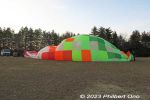
Inflating the hot-air balloon.Mar 11, 2023
|
|
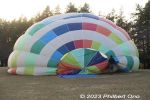
Mar 11, 2023
|
|
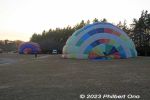
Mar 11, 2023
|
|
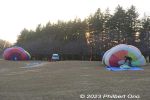
Mar 11, 2023
|
|
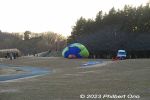
The balloons inflated quite quickly.Mar 11, 2023
|
|
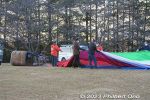
Inflating the balloon.Mar 11, 2023
|
|
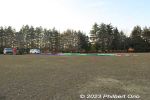
Mar 11, 2023
|
|
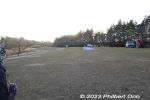
Kubo Park's grassy lawn where four hot-air balloons were placed, rolled out flat on a blue tarp over the grass. 芝生広場Mar 11, 2023
|
|
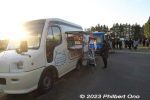
Food trucks for the balloon glow event.Mar 11, 2023
|
|
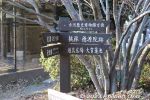
Mar 11, 2023
|
|
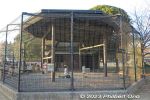
Pheasant bird cage. 鳥小屋Mar 11, 2023
|
|
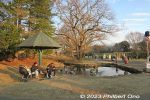
Mar 11, 2023
|
|
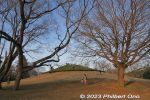
Fujimi-zuka Hill 富士見塚Mar 11, 2023
|
|
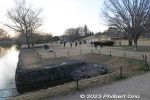
Koga Kubo Park opened on March 24, 1975. It's quite a large park.Mar 11, 2023
|
|
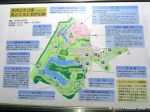
Map of Koga Kubo Park. Large park noted for peach blossoms from late March to early April. Also has irises and lotus in summer. 古河公方公園Mar 11, 2023
|
|

Koga Kubo Park has Gosho-numa Pond. Mar 11, 2023
|
|
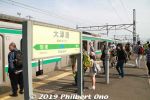
JR Otsuko Station platform.Jun 03, 2019
|
|

JR Otsuko Station platform.Jun 03, 2019
|
|
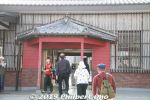
JR Otsuko Station has its entrance modeled after the Rokkakudo Pavilion on the Izura Coast.Jun 03, 2019
|
|
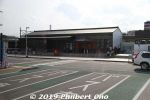
JR Otsuko StationJun 03, 2019
|
|
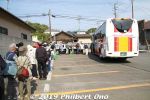
Shuttle bus back to JR Otsuko Station. Shuttle bus stop was near the start point a few hundred meters from the corner.Jun 03, 2019
|
|
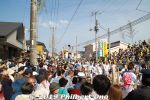
This corner is the most crowded spot. Many people leave after seeing this corner turn.Jun 03, 2019
|
|

Jun 03, 2019
|
|
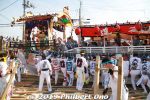
Getting ready for the rest of the straight route.Jun 03, 2019
|
|

They turned the boat 90 degrees in one drag.Jun 03, 2019
|
|
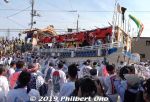
Turning the boat 90 degrees.Jun 03, 2019
|
|
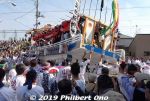
They turn the boat by dragging the stern of the boat. They had a rope tied to the rear part of the boat.Jun 03, 2019
|
|

The route has one 90-degree corner where the boat is turned. This is a festival highlight and many people crowd this corner.Jun 03, 2019
|
|
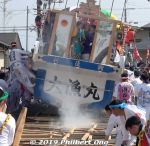
The friction between the boat hull and pallets makes it smoke each time the boat is dragged. The pallets are scorched.Jun 03, 2019
|
|
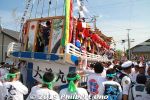
Jun 03, 2019
|
|
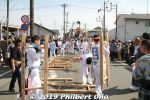
Jun 03, 2019
|
|
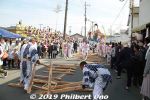
Picking up the pallets.Jun 03, 2019
|
|
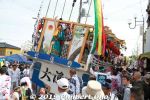
The boat is tilted to one side when it is dragged. It creates less friction and makes it easier to drag.Jun 03, 2019
|
|
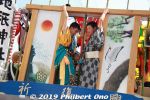
Three shrine priests are among the 40 people onboard. It's pretty rough to be rocked often. Motion sickness is possible.Jun 03, 2019
|
|
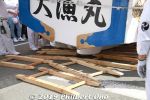
The boat hull has small center ridges that keep it standing upright. It's also designed not to topple over when rocked.Jun 03, 2019
|
|
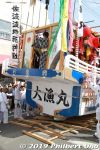
Jun 03, 2019
|
|
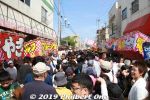
Narrow streets make it crowded.Jun 03, 2019
|
|
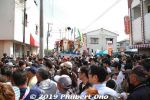
Jun 03, 2019
|
|
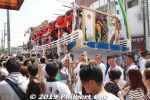
Jun 03, 2019
|
|
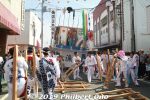
After the drag, they pick up the pallets and lay them in front of the boat on the road ahead.Jun 03, 2019
|
|
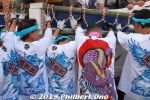
Jun 03, 2019
|
|
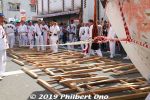
Pallets are ready for the next drag.Jun 03, 2019
|
|
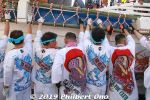
There are men on both sides of the boat who rock the boat before the drag. When the boat moves, they hang on to the boat.Jun 03, 2019
|
|

Ofune being dragged over wooden pallets.Jun 03, 2019
|
|

Dragging the boat over the wooden pallets.Jun 03, 2019
|
|

They drag the boat 20 meters at a time. After each drag, they have to move and place the pallets ahead of the boat. The route is 1,200 meters long, and it takes 5 hours to reach the end.Jun 03, 2019
|
|
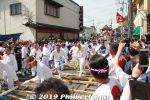
When dragging the boat, the men have to run over the wooden pallets and take care not to trip and fall.Jun 03, 2019
|
|
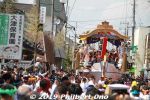
Jun 03, 2019
|
|
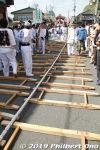
Boat is pulled by a 200-meter white rope, 7 cm thick. About 200 to 300 people pull the boat.Jun 03, 2019
|
|
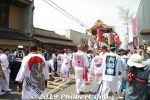
Before dragging the boat, they violently rock the boat side to side.Jun 03, 2019
|
|
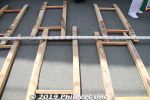
They use about 100 soroban wooden pallets (ソロバン) made of Japanese oak tree, a hard wood. Each weighs 20 kg.Jun 03, 2019
|
|
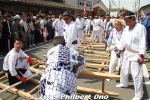
Ahead of the boat, wooden pallets called "soroban" are laid on the road for the boat to be dragged on.Jun 03, 2019
|
|
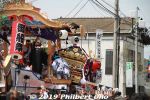
The portable shrine is loaded on the boat.Jun 03, 2019
|
|
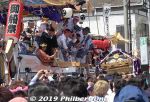
The boat crew welcome the portable shrine before it is loaded aboard.Jun 03, 2019
|
|
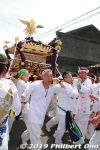
After being paraded around town all morning, the portable shrine arrives near the boat.Jun 03, 2019
|
|
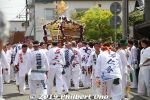
After being paraded around town all morning, the portable shrine arrives near the boat.Jun 03, 2019
|
|
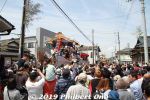
Jun 03, 2019
|
|
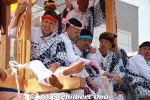
Boat crew waiting for the portable shrine to be loaded on the boat, which then becomes a "sacred boat."Jun 03, 2019
|
|
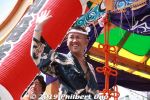
Looks like the boat captain.Jun 03, 2019
|
|
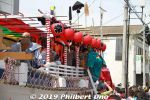
Boat musicians and crew board the boat via ladder.Jun 03, 2019
|
|
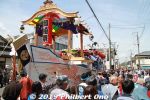
Jun 03, 2019
|
|

Most boat musicians are local kids.Jun 03, 2019
|
|
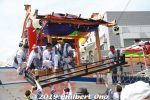
Removing in the boat railingsbefore people boarded.Jun 03, 2019
|
|
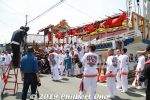
Group photos in front of the boat.Jun 03, 2019
|
|
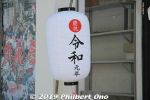
This was the first Ofune Matsuri to be held in the new era of Reiwa.Jun 03, 2019
|
|
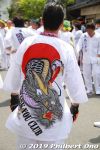
Thank You ClubJun 03, 2019
|
|
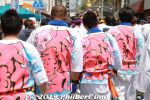
The festival participants belong to different fishermen's groups indicated by their shirt. They are from a group called Fudo-maru.Jun 03, 2019
|
|
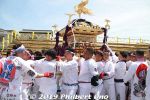
On May 3 from morning, they parade the mikoshi portable shrine bearing Sawawachigi Shrine's god for maritime safety.Jun 03, 2019
|
|
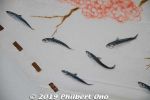
SardinesJun 03, 2019
|
|
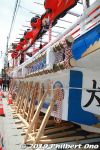
The festival originally used an actual fishing boat. But now this wooden boat was built especially for the festival.Jun 03, 2019
|
|
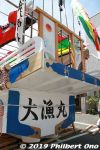
Jun 03, 2019
|
|
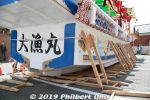
The boat rests on wooden pallets called "soroban." It is dragged on a bed of soroban pallets.Jun 03, 2019
|
|
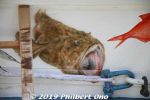
Paitning of a monkfish, a delicacy of Kita-Ibaraki.Jun 03, 2019
|
|
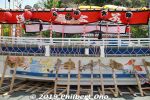
The festival used to be held by local fishermen, Now held by Hitachi-Otsu Ofune Matsuri Preservation Society (常陸大津の御船祭保存会) with most of the men being fishermen or their descendants.Jun 03, 2019
|
|
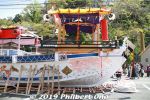
The festival started to be held every 5 years from 1975. The boat has to be repaired after each festival and the money could not be secured more often than every 5 years.The boat is normally displayed at a fishing museum named Yo-soro (よう・そろー) in Kita-Ibaraki.Jun 03, 2019
|
|
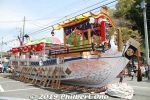
This festival was originally a portable shrine procession on the sea via boat going around the bay. But the boat's start point was filled in, so the boat procession was then held on land instead since 200 years ago.Jun 03, 2019
|
|
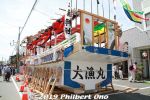
Back of ofune boat.Jun 03, 2019
|
|

My video of Kita-Ibaraki's Ofune Matsuri boat festival.Jun 03, 2019
|
|
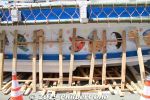
The ofune wooden fishing boat is painted with local fish.Jun 03, 2019
|
|

Boat is 15 meters long, 4 meters wide, and weighs 5 tons. It becomes 2 tons heavier when the portable shrine (1 ton) and crew and musicians board.Jun 03, 2019
|
|
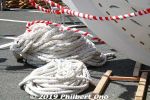
White ropes to pull the boat on the road.Jun 03, 2019
|
|
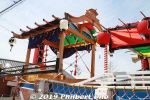
The bow has this shed for the portable shrine to be loaded on. Festival was designated as a National Important Intangible Folk Cultural Property (重要無形民俗文化財) in 2017.Jun 03, 2019
|
|
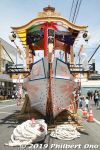
On the May 3 main festival day, the boat is dragged along the same route west to east with the portable shrine and shrine priests aboard.This boat is here at the start point on May 3, 2019.Jun 03, 2019
|
|

On the May 2 festival eve, the boat is pulled from east to west along 1,200 meters in the center of town without the portable shrine aboard.Jun 03, 2019
|
|
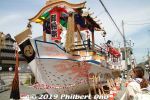
Unique Shinto festival where they drag a sacred fishing boat across land instead of water. The boat has no wheels. All other boat festivals have the boat sailing on water, but not this one.Jun 03, 2019
|
|
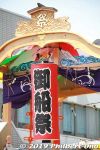
Hitachi-Otsu Ofune Matsuri fishing boat festival is Kita-Ibaraki's biggest festival, held only only once every five years on May 2 and 3 as the grand spring festival of Sawawachigi Shrine (佐波波地祇神社) in Otsu-cho, Kita-Ibaraki, Ibaraki PreHeld by local fishermen to pray for abundant fish and maritime safety. These photos were taken on May 3, 2019.Jun 03, 2019
|
|

Short video of Hitachi-Otsu Ofune Matsuri boat festival.May 11, 2019
|
|
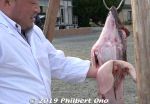
The chef is holding the liver (ankimo), the most prized part of the fish.Mar 23, 2019
|
|
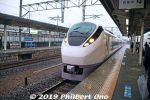
At JR Isohara Station, our tokkyu express train back to Ueno, Tokyo.Mar 22, 2019
|
|
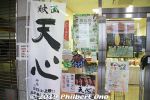
Tourist information center at JR Isohara Station.Mar 22, 2019
|
|
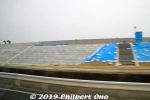
A sea wall being built. After 8 years, we hardly saw any other remnants of tsunami or quake damage.Mar 22, 2019
|
|
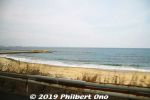
Kita-Ibaraki also has flat, sandy beaches.Mar 22, 2019
|
|

Appetizers. The food is good though.Mar 22, 2019
|
|
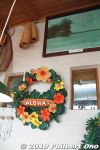
Marsala restaurant has Hawaiian decor, but no Hawaiian food. Only tropical drnks in summer.Mar 22, 2019
|
|
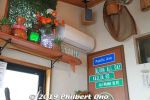
Marsala restaurant has Hawaiian decor.Mar 22, 2019
|
|
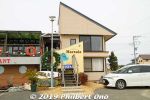
Marsala restaurant near the Izura Coast. マルサーラMar 22, 2019
|
|
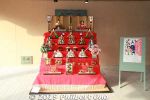
Hina Matsuri dolls displayed at the museum entrance.Mar 22, 2019
|
|
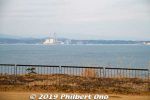
The museum has fine views of the ocean and southern coast of Fukushima (Iwaki). You may also notice a power plant in the distance. That's not the one that had a meltdown in 2011. It's the Nakoso Power Plant (勿来発電所), a thermal power plant (non-nuclear) operated by Joban Joint Power Co., Ltd.Mar 22, 2019
|
|
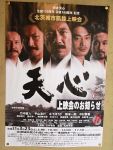
Movie poster for the movie, "Tenshin." It was being screened in the city.Mar 22, 2019
|
|
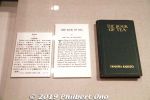
Tenshin was proficient in English and wrote the classic book, "The Book of Tea" in English.Mar 22, 2019
|
|
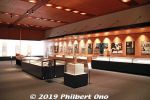
Tenshin Memorial Room explained the life and achievements of Tenshin. Founded Nihon Bijutsu-in (Art Institute of Japan) and moved it from Tokyo to Izura coast in Kita-Ibaraki in 1906.Includes exhibits about the time he worked at the Boston Museum of Fine Arts in 1910 in charge of the Chinese/Japanese art division.Mar 22, 2019
|
|
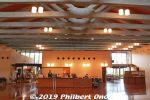
Lobby of Tenshin Memorial Museum of Art.Tenshin is revered in Kita-Ibaraki because he moved his Nihon Bijutsu-in artist group (Art Institute of Japan) here from Tokyo in 1906. His students, prominent Nihonga painters Yokoyama Taikan (1868–1958), Hishida Shunso (1874–1911), Shimomura Kanzan (1873–1930), and Kimura Buzan (1876–1942) followed him to this picturesque Izura Coast and built artist studio residences near Tenshin's home. The residences of Tenshin, Taikan, and Buzan still remain.Mar 22, 2019
|
|
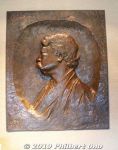
Tenshin Memorial Museum of Art was named after Okakura Tenshin (aka Okakura Kakuzo 1863–1913 岡倉天心/覚三), a famous art scholar and advocate of Japanese art, especially Nihonga paintings.In 1890, he was one of the founders and the first de facto dean of the forerunner of the Tokyo University of the Arts (Geidai), one of Japan's most prominent art universities.Mar 22, 2019
|
|
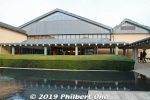
Tenshin Memorial Museum of Art, Ibaraki (茨城県天心記念 五浦美術館). Beautiful art museum in a beautiful place on the coast.Mar 22, 2019
|
|
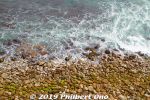
Mar 22, 2019
|
|
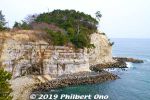
Izura CoastMar 22, 2019
|
|
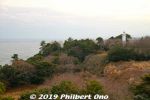
Mar 22, 2019
|
|
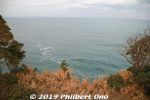
View from the lookout tower.Mar 22, 2019
|
|
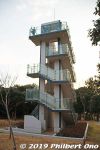
Izura Misaki Park has this lookout tower. 五浦岬公園 展望慰霊塔Mar 22, 2019
|
|
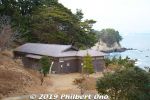
Prop for the movie "Tenshin."Mar 22, 2019
|
|

Izura Misaki Park on the coast.Mar 22, 2019
|
|
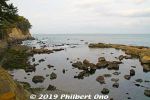
Mar 22, 2019
|
|
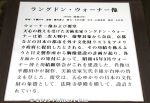
About Langdon Warner.Mar 22, 2019
|
|
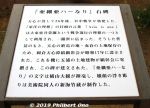
About the "Asia is One" monument.Mar 22, 2019
|
|
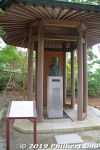
Along the path to Rokkakudo is this bust of Harvard professor and art historian Langdon Warner (1881–1955) who once studied under Tenshin and visited here. He is being revered here for supposedly helping to save Kyoto and Nara from World War II bombingsMar 22, 2019
|
|
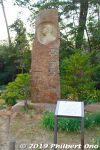
Mar 22, 2019
|
|

About the Tenshin residence.Mar 22, 2019
|
|
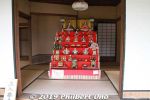
Hina dolls displayed inside Tenshin's home for Girl's Day (March 3).Mar 22, 2019
|
|
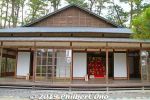
Tenshin's home on the Izura Coast, near the Rokkakudo Pavilion. Can't go inside.Mar 22, 2019
|
|
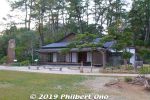
Tenshin's home on the Izura Coast, near the Rokkakudo Pavilion. Mar 22, 2019
|
|
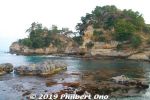
Artist-inspiring scenery around Rokkakudo, Kita-Ibaraki.Mar 22, 2019
|
|
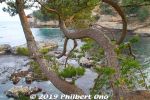
Mar 22, 2019
|
|
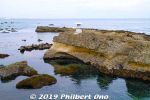
Scenery in front of Rokkakudo.Mar 22, 2019
|
|
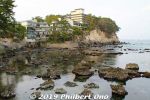
Scenery around Rokkakudo.Mar 22, 2019
|
|

About Rokkakudo.Mar 22, 2019
|
|
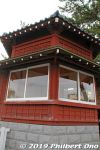
Mar 22, 2019
|
|
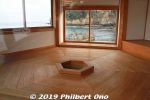
You cannot enter the Rokkakudo, but you can see inside through the glass windows made in the UK. There's supposed to be tatami mats inside. Mar 22, 2019
|
|
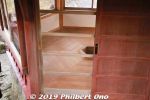
Must've been mesmerizing to pass time here. A place to attain artistic enlightenment. Mar 22, 2019
|
|
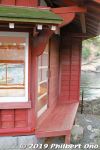
Mar 22, 2019
|
|
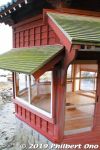
The glass windows were made in the UK.Mar 22, 2019
|
|
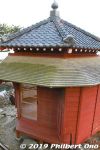
Mar 22, 2019
|
|
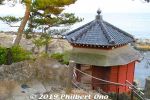
For a small admission fee, you can go down a path to see the Rokkakudo. (五浦六角堂).Mar 22, 2019
|
|
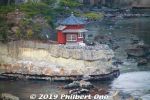
Izura Rokkakudo (五浦六角堂) is now being maintained by Ibaraki University and it continues to be a sacred spot for Japanese artists.Mar 22, 2019
|
|
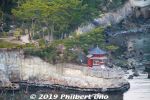
In Kita-Ibaraki, Tenshin used Rokkakudo to listen to ocean waves and gaze at the scenery. On March 11, 2011, it was washed away by the tsunami, but it was rebuilt in 2012. Mar 22, 2019
|
|
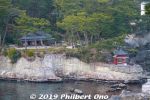
The small red pavilion is Izura Rokkakudo (五浦六角堂), the symbol of Kita-Ibaraki. Izura Rokkakudo was originally designed and built in 1905 by artist Okakura Tenshin (岡倉天心) as part of his residence. His house is on the left..Mar 22, 2019
|
|
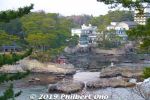
Kita-Ibaraki is a small, coastal city (pop. 42,000) with these picturesque cliffs of the Izura Coast (五浦海岸). Famous art scholar Okakura Tenshin (1863–1913 岡倉天心) found this scenic place to be a great inspiration for artists and moved hereMar 22, 2019
|
|
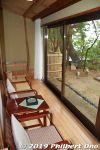
One of the most elegant Japanese-style hotels I've ever seen. Precious artwork everywhere. It's like staying in an art museum.Mar 22, 2019
|
|
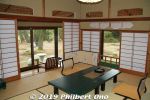
Large and private corner guest room inside Kimura Buzan home. It costs about ¥18,000 per person per night to stay here.Mar 22, 2019
|
|

Fancy corridor inside Kimura Buzan home.Mar 22, 2019
|
|

Fancy corridor inside Kimura Buzan home.Mar 22, 2019
|
|
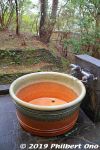
Outdoor bathtub made of Shigaraki-yaki pottery (from Shigaraki, Shiga Prefecture). The hotel has excellent taste in bathtubs. 信楽焼Mar 22, 2019
|
|
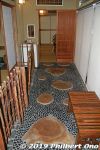
Corridor with pebbled floor leading to the outdoor bath.Mar 22, 2019
|
|
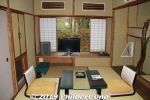
A smaller guest room.Mar 22, 2019
|
|
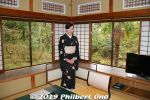
The okami-san posing in another guest room of the Buzan residence. Mar 22, 2019
|
|
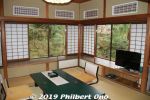
Corner room.Mar 22, 2019
|
|
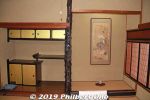
Tokonoma of another guest room. Many of the materials are quite rare and valuable today.Mar 22, 2019
|
|
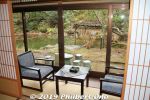
Relax here with a view.Mar 22, 2019
|
|
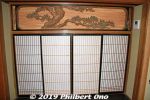
Elegant transom with a pine tree carving.Mar 22, 2019
|
|

A large guest room. 武山邸客室Mar 22, 2019
|
|
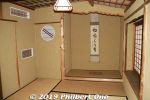
Buzan's beautiful tea ceremony room. Very chic. Available for rent for tea ceremonies.Mar 22, 2019
|
|
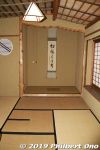
Buzan's beautiful tea ceremony room.Mar 22, 2019
|
|
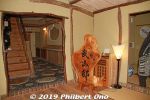
Entrance lobby of Kimura Buzan home. The wooden sign says "Buzan Residence." 武山邸Mar 22, 2019
|
|
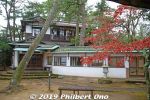
Part of the Buzan residence.Mar 22, 2019
|
|
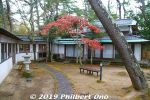
Different parts of the residence are connected by enclosed corridors.Mar 22, 2019
|
|
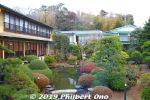
Courtyard garden of Buzan home.Mar 22, 2019
|
|
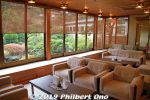
Itsuura Kanko Hotel Honkan lobby.Mar 22, 2019
|
|
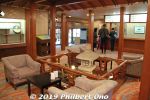
Itsuura Kanko Hotel Honkan lobby.Mar 22, 2019
|
|
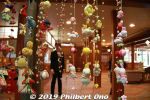
Lobby with Hina Matsuri decorations.Mar 22, 2019
|
|
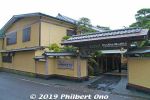
Another part of the Itsuura Kanko Hotel is the main wing (本館) which is the former artist residence of Kimura Buzan (木村武山), another famous Nihonga painter who followed Tenshin to Izura.Mar 22, 2019
|
|
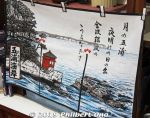
Hotel gift shop had this noren curtain with Rokkakudo design.Mar 22, 2019
|
|

Hotel gift shop.Mar 22, 2019
|
|
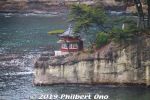
View of Rokkakudo from the hotel's modern tower.Mar 22, 2019
|
|
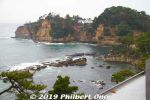
View from the hotel's modern tower.Mar 22, 2019
|
|
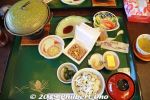
Breakfast included natto fermented soybeans. Ibaraki is famous for natto.Mar 22, 2019
|
|
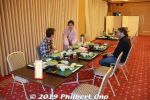
Next morning, breakfast in a large banquet hall.Mar 22, 2019
|
|
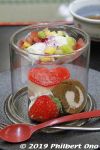
We were super stuffed, but there's always room for dessert...Mar 22, 2019
|
|
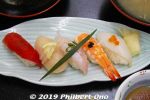
Sushi. Tuna, shrimp, ika squid, hotate scallop.Mar 22, 2019
|
|
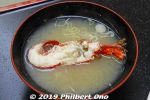
Lobster in miso soup.Mar 22, 2019
|
|
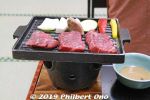
Hitachi Wagyu beef was just a small part of our dinner. We got really stuffed. 常陸牛Mar 22, 2019
|
|
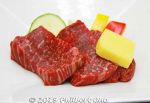
Local Hitachi Wagyu beef. ("Hitachi" is an old name for Ibaraki Prefecture. The famous electronics company Hitachi is also from Ibaraki.) 常陸牛Mar 22, 2019
|
|
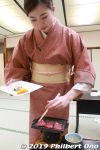
Hotel staff in kimono cooking my Hitachi Wagyu beef. 常陸牛Mar 22, 2019
|
|
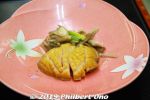
Abalone steak.Mar 22, 2019
|
|
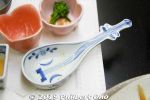
Biwa lute-shaped dish.Mar 22, 2019
|
|
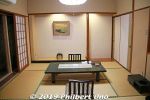
Typical room in the hotel's modern tower. This is the living room.Mar 22, 2019
|
|
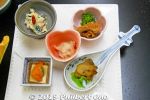
Appetizers.Mar 22, 2019
|
|
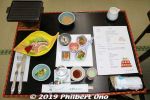
Appetizers for our full-course dinner.Mar 22, 2019
|
|
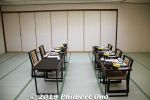
In the modern hotel tower, our banquet room for dinner.Mar 22, 2019
|
|

Typical room in the hotel's modern tower. Mar 22, 2019
|
|
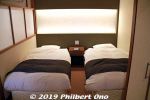
This is a typical room in the hotel's modern tower. Twin beds.Mar 22, 2019
|
|
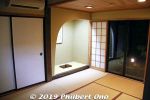
Taikan's residence is great for groups up to 22 people. It's a residence separate from the main hotel building so there's lots of privacy. Rates are very reasonable too. It was awesome to stay here.Mar 22, 2019
|
|
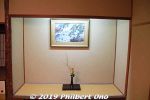
Beautiful tokonoma and painting.Mar 22, 2019
|
|
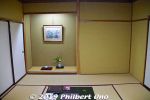
Another part of the Taikan house. Very aesthetic.Mar 22, 2019
|
|
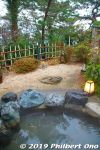
The Taikan house also has a small outdoor hot spring bath.Mar 22, 2019
|
|
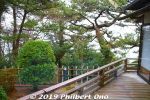
Outside the living room, a moon-viewing deck.Mar 22, 2019
|
|
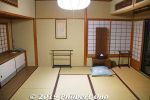
Another room of the living room.Mar 22, 2019
|
|
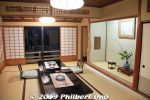
This used to be part of Yokoyama Taikan's living room, now one of the rooms where you can stay. Mar 22, 2019
|
|
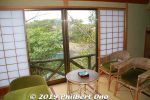
Mar 22, 2019
|
|
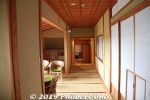
Main corridor inside Yokoyama Taikan Memorial Hall.Mar 22, 2019
|
|
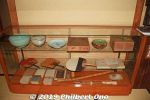
Yokoyama Taikan (1868–1958) is one of the most famous Nihonga painters. His former residence includes a showcase of his artifacts.Mar 22, 2019
|
|
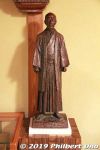
Statue of Yokoyama Taikan (横山大観), a very famous Japanese Nihonga painter. Taikan was born in Mito, the capital of Ibaraki. (横山大観)Mar 22, 2019
|
|
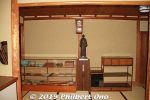
Entrance foyer of Yokoyama Taikan Memorial Hall where we stayed. Great private lodging for groups up to 22 people.Mar 22, 2019
|
|
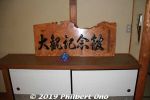
Itsuura Kanko Hotel is quite unique and historical because it renovated the artist residences of Nihonga painters Yokoyama Taikan and Kimura Buzan and uses them as part of the hotel where guests can stay. We actually stayed in the Yokoyama Taikan residence here. (横山大観記念館 特別室)Mar 22, 2019
|
|
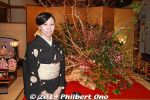
Itsuura Kanko Hotel's okami-san or proprietress (女将) speaks English. The hotel also has English-speaking staff.Mar 22, 2019
|
|
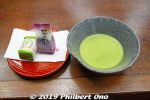
My complimentary matcha tea and confections.Mar 22, 2019
|
|
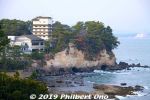
Near Rokkakudo Pavilion on the Izura coast is Itsuura Kanko Hotel (五浦観光ホテル), pictured here on the cliffs. This was our hotel for the night. It had prime views of the coast.The hotel was high enough on the cliff to escape the five-meter-high tsunami on March 11, 2011. The hotel suffered only minor damage from the earthquake. The ground is very solid here, so quake damage was minimal.
Note that the hotel's name is pronounced "Itsuura" while the coast is "Izura." (Kanji characters are the same.) izura.netMar 22, 2019
|
|
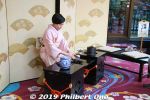
We arrived in the late afternoon in time for a tea ceremony in the hotel lobby. Conducted by the hotel's okami-san (proprietress 女将).Mar 22, 2019
|
|
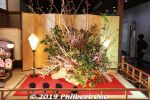
Lovely flowers in the hotel lobby.Mar 22, 2019
|
|
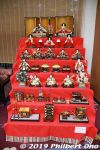
In the hotel lobby, Hina Matsuri dolls displayed for Girl's Day in early March.Mar 22, 2019
|
|

In the hotel lobby: Kita-Ibaraki's official mascots, An-chan and Kou-chan. Together, they are "Ankou" which means "monkfish," or angler fish that is the city's most famous delicacy. An-chan is a fisherman, and Kou-chan is a monkfish.Mar 22, 2019
|
|
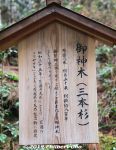
About the cedar tree.Mar 22, 2019
|
|
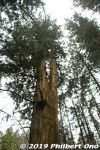
Rare cedar with three trunks.Mar 22, 2019
|
|
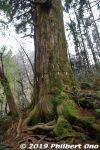
Rare cedar with three trunks.Mar 22, 2019
|
|

Walking to the famous cedar tree.Mar 22, 2019
|
|
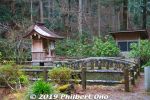
Benzaiten Shrine.Mar 22, 2019
|
|
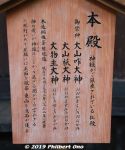
Gods worshipped by Hanazono Shrine includes Sanno, the mountain deity. Mar 22, 2019
|
|
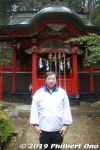
Hanazono Shrine priest.Mar 22, 2019
|
|
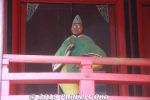
Mar 22, 2019
|
|
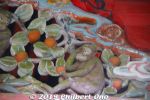
Covering only one eye.Mar 22, 2019
|
|
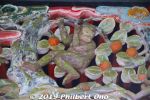
Covering only one ear.Mar 22, 2019
|
|
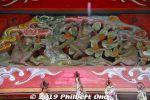
Hanazono Shrine also has a version of the three monkeys here on the Honden shrine hall, but only half the mouth, only one ear, and only one eye are covered as you can see here. Mar 22, 2019
|
|
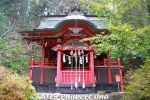
Kita-Ibaraki's Hanazono Shrine was patronized by the Tokugawa shoguns. It features the flamboyant architectural style called "gongen-zukuri" (権現造) with colorful, intricate wood carvings on shrine buildings. It's similar to the famous Toshogu Shrine in Nikko (Tochigi) dedicated to Ieyasu. Toshogu in Nikko is famous for the three monkeys: "see no evil, hear no evil, speak no evil." 本殿Mar 22, 2019
|
|
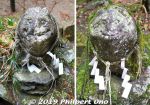
Koma-zaru guardian monkeys (instead of dogs). 狛猿Mar 22, 2019
|
|
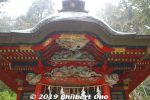
Haiden worship hall. 拝殿Mar 22, 2019
|
|
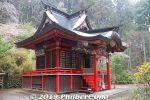
Haiden worship hall. 拝殿Mar 22, 2019
|
|

KaguradenMar 22, 2019
|
|
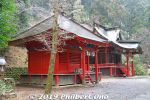
Mar 22, 2019
|
|
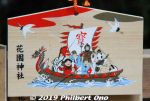
Ema prayer tabletMar 22, 2019
|
|
|
|